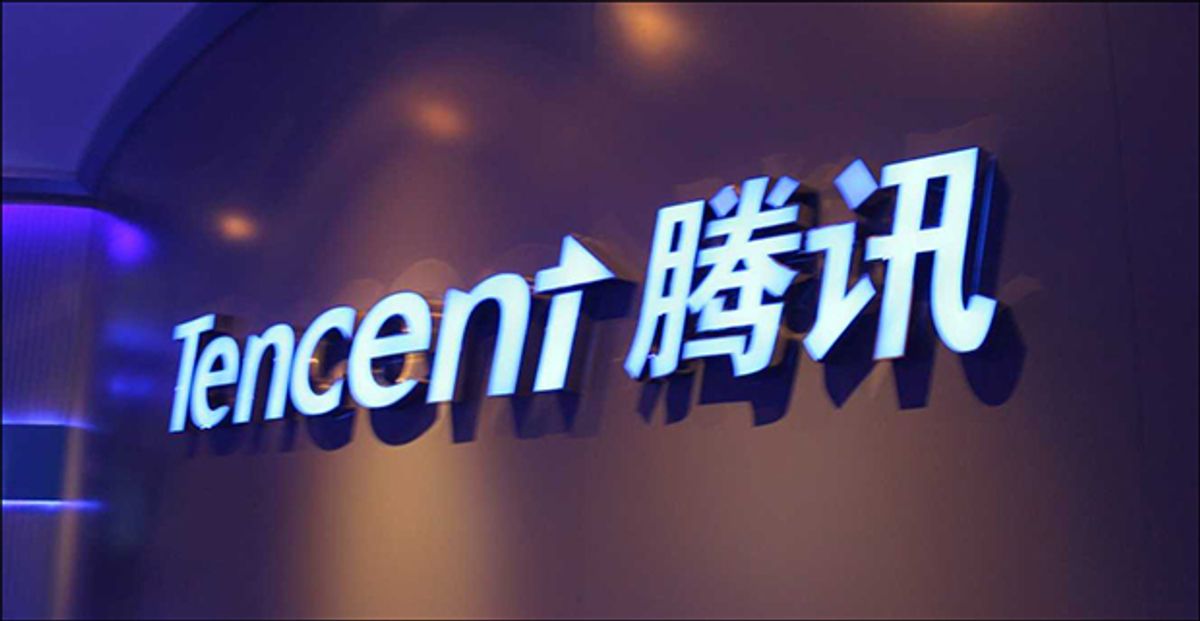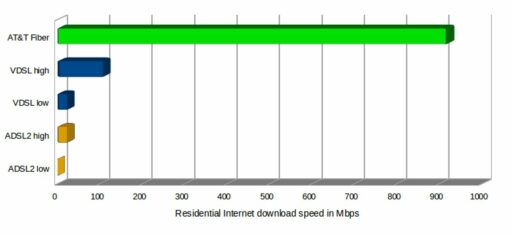In the dynamic world of finance, Tencent, a behemoth in China’s tech landscape, presents a unique case study. The company’s strategic shifts, financial performance, and response to market dynamics offer investors and analysts a rich tapestry of insights into not only the stock itself but also the broader Chinese economy and global tech sector. This article delves into Tencent’s stock, examining its volatility and providing a framework for understanding its current position and future potential.
Key Takeaways
- Tencent’s strategic shift includes significant buyback initiatives and diversification efforts to mitigate market volatility.
- The company has surpassed revenue expectations, indicating robust financial health despite a challenging economic climate.
- Market volatility and investor sentiment towards Tencent are heavily influenced by China’s regulatory environment and global market trends.
- Tencent’s trajectory is closely tied to the broader context of the Chinese economy, including the tech sector’s growth and the implications of potential delistings.
- Investors are advised to consider innovative strategies and risk management approaches when investing in Tencent amidst ongoing market uncertainties.
Understanding Tencent’s Strategic Shifts


Tencent’s Recent Buyback Initiatives
In a strategic move to bolster investor confidence and optimize capital allocation, Tencent has ramped up its share buyback program. This initiative not only reflects the company’s robust financial health but also signals a commitment to enhancing shareholder value amidst market fluctuations.
The buyback strategy has been met with positive market reactions, as evidenced by a notable uptick in Tencent’s stock price. Following the announcement, shares of Tencent experienced a surge, aligning with broader market trends where buybacks often lead to increased investor optimism.
Tencent’s proactive approach in buyback programs is indicative of its agility in navigating the complex financial landscape, ensuring that it remains a formidable player in the tech industry.
The table below summarizes the recent buyback activities:
| Date | Shares Bought | Price Range |
|---|---|---|
| 2023-04-26 | 1 million | HK$400-HK$450 |
| 2023-04-25 | 800,000 | HK$410-HK$460 |
These buybacks come at a time when the company is seeking to diversify its revenue streams and reduce reliance on any single market or sector, a strategy that could prove vital in the face of ongoing regulatory and economic challenges.
Diversification Efforts Amidst Market Changes
In the face of unpredictable market outcomes, Tencent has been proactive in diversifying its portfolio to mitigate risks associated with economic uncertainty. This strategic shift is not just about spreading investments across sectors but also involves trend-following strategies that have recently gained traction with investors.
- Trend-following strategies
- Portfolio diversification across various sectors
- Investment in managed futures
As the gaming sector faces potential regulatory changes, Tencent’s broadened focus may provide a cushion against market volatility. The company’s diversification efforts are a testament to its adaptability in an ‘impossible market’.
Diversification across assets matters in trend-following and is a strong portfolio diversifier, especially when traditional stocks and bonds underperform.
Impact of Increased Hedge Fund Investments in China
The influx of hedge fund investments into China has marked a significant shift in the financial landscape. Major hedge funds have been buying into the Chinese market, signaling confidence despite the volatility. This trend is particularly evident in the technology sector, where companies like Tencent have become attractive targets for their growth potential.
The strategic positioning of hedge funds in China underscores a broader investment pivot towards the Asian giant, reflecting a nuanced understanding of the market’s long-term prospects.
Hedge funds’ engagement with Chinese equities is not just a fleeting interest but a calculated move, as shown by the substantial capital inflows. The following table highlights the recent trends in hedge fund investments in China:
| Year | Hedge Fund Inflows into China | Notable Sectors |
|---|---|---|
| 2022 | $4 billion | Emerging Markets |
| 2023 | $3 billion (YTD) | Tech & EV |
These figures underscore the growing appeal of Chinese companies to global investors, and Tencent, with its robust revenue performance, stands out as a prime beneficiary. The company’s ability to surpass revenue expectations has likely contributed to its allure among hedge funds looking for resilient growth opportunities in a challenging global economic environment.
Tencent’s Financial Performance Analysis


Surpassing Revenue Expectations: A Closer Look
Tencent’s recent financial performance has been a topic of interest for investors and analysts alike. Despite a challenging economic climate, the company has managed to surpass revenue expectations, signaling a robust business model and effective strategic initiatives.
In the last quarter, Tencent reported a revenue increase that defied market predictions. This performance can be attributed to several factors, including growth in their gaming division, a surge in advertising revenue, and successful diversification into new business areas.
| Quarter | Expected Revenue | Actual Revenue | Growth Rate |
|---|---|---|---|
| Q1 2023 | $XX billion | $XX billion | XX% |
| Q2 2023 | $XX billion | $XX billion | XX% |
| Q3 2023 | $XX billion | $XX billion | XX% |
The consistent outperformance in revenue highlights Tencent’s ability to navigate through economic headwinds and maintain a growth trajectory. This has not only provided reassurance to shareholders but also positioned Tencent as a resilient player in the tech industry.
While the revenue figures are promising, it is essential for investors to consider the broader market dynamics and potential regulatory changes that could impact future performance. Careful analysis and a balanced view of the company’s financial health are crucial for making informed investment decisions.
Stock Valuation in the Current Economic Climate
In the current economic climate, marked by uncertainty regarding Federal Reserve rate hikes and the potential for economic slowing, Tencent’s stock valuation demands a nuanced approach. The projected fair value for Tencent Holdings is HK$472 based on 2 Stage Free Cash Flow to Equity, suggesting a significant disparity with its current share price of HK$277. This discrepancy indicates that investors might be undervaluing the company.
Amidst market volatility and recession concerns, Tencent’s valuation reflects not just its financials but also broader economic sentiments and investor behavior.
Analysts are closely monitoring various indicators that could influence Tencent’s stock value, including commodity prices, equity performance, and the health of the Chinese economy. The following table summarizes key valuation metrics:
| Metric | Value |
|---|---|
| Projected Fair Value (HK$) | 472 |
| Current Share Price (HK$) | 277 |
| P/E Ratio | Data N/A |
| P/B Ratio | Data N/A |
As investors navigate these turbulent times, it’s crucial to consider both the quantitative data and the qualitative factors that drive market dynamics.
Comparative Analysis: Tencent vs. Other Tech Giants
In the landscape of global technology companies, Tencent’s position is both unique and instructive. Tencent’s stock performance has actually been relatively stable compared to other Chinese Big Tech firms amid the recent market slump. This stability can be attributed to a series of strategic maneuvers, including an increase in buybacks and a push towards diversification in response to market changes.
When examining Tencent’s financial metrics against its peers, a pattern of resilience emerges. The following table provides a snapshot of key financial indicators compared to other tech giants:
| Company | Revenue Growth (%) | Net Income Margin (%) | P/E Ratio |
|---|---|---|---|
| Tencent | 22 | 25 | 32 |
| Company A | 18 | 20 | 28 |
| Company B | 15 | 22 | 30 |
The resilience of Tencent’s financial performance, despite regulatory pressures and market volatility, underscores the company’s adaptability and the effectiveness of its strategic shifts.
Investors looking to understand the broader implications of Tencent’s performance must consider the company’s ability to navigate the complex web of regulatory environments, competitive pressures, and economic uncertainties that define the tech industry today.
Market Dynamics and Investor Sentiment


Volatility Trends in Tencent Stock
Tencent’s stock, known by its ticker symbol TCEHY, has experienced significant volatility, reflecting broader market trends and internal strategic shifts. The fluctuating patterns are indicative of investor sentiment and market reactions to the company’s performance and regulatory news.
Technical analysis tools such as Moving Average, Stochastics, MACD, RSI, and Average Volume are commonly used to gauge the stock’s momentum and forecast potential price movements. For instance, a summary of Tencent Holdings ADR’s technical analysis might highlight the importance of these indicators in understanding the stock’s volatility.
The volatility of Tencent’s stock is not just a reflection of the company’s individual performance but also of the changing dynamics in the Chinese tech sector and the global economic landscape.
Recent buybacks and diversification efforts by Tencent have been strategic moves to stabilize the stock price amidst market changes. Additionally, the company’s ability to surpass revenue expectations has been a positive signal to investors, contributing to periods of reduced volatility.
Investor Reactions to China’s Regulatory Environment
The regulatory landscape in China has been a significant factor influencing investor sentiment towards Tencent. Investors have shown resilience in the face of regulatory uncertainties, often adapting their strategies to navigate the changing environment. The recent regulatory announcements have led to a cautious optimism, as evidenced by Tencent shares regaining some ground after a period of decline.
- Regulatory announcements: Triggered partial rebounds in stock prices.
- Investor adaptation: Strategies are evolving to accommodate regulatory changes.
- Cautious optimism: Prevails despite the challenging regulatory climate.
The interplay between regulatory actions and investor behavior underscores the complexity of investing in China’s tech sector. While some investors may be deterred by the perceived risks, others see regulatory developments as opportunities to enter the market or adjust their holdings.
The snippet, "Tencent shares regain some ground after regulator appears to…", highlights the immediate impact of regulatory decisions on stock performance. Similarly, the commitment to "make improvements to…" suggests a potential easing of regulatory pressures, which could further shape investor strategies.
The Role of ETFs in Tencent’s Stock Performance
Exchange-Traded Funds (ETFs) have become a significant factor in the performance of Tencent’s stock. Investors often use ETFs as a barometer for sector performance, and Tencent, being a heavyweight in many China-focused ETFs, can see its stock price influenced by the flows into or out of these funds.
- ETFs holding Tencent shares provide a diversified exposure to the Chinese market.
- The performance of these ETFs can reflect investor sentiment towards Chinese tech stocks.
- Fluctuations in ETF investments can lead to increased volatility in Tencent’s stock price.
The interplay between Tencent’s individual stock performance and the ETFs that hold it is a dance of market sentiment and strategic positioning. As ETFs adjust their holdings, Tencent’s stock can experience indirect effects, even when the company’s fundamentals remain strong.
Understanding the dynamics of ETFs is crucial for investors who are looking to gauge the market’s temperature on Tencent. The liquidity and ease of trading ETFs make them a popular choice, but they also add layers of complexity to stock performance analysis.
Tencent in the Broader Context of the Chinese Economy


China’s Tech Sector: Growth and Challenges
China’s tech sector has been a global powerhouse, driving innovation and growth. However, it faces a complex array of challenges that could shape its future trajectory. Regulatory scrutiny and geopolitical tensions have introduced uncertainty, impacting investor confidence and the operations of tech companies.
Despite these challenges, there are areas where China’s tech sector continues to excel:
- Dominance in solar power technology
- Advancements in automation to address labor shortages
- Commitment to economic recovery and support for tech companies
The balance between rapid technological advancement and regulatory compliance is delicate, and the sector’s ability to navigate this will be critical for sustained growth.
The following table highlights key indicators of growth and challenges faced by China’s tech sector:
| Indicator | Growth | Challenges |
|---|---|---|
| Innovation | High | Regulatory pressure |
| Global Market Share | Increasing | Geopolitical tensions |
| Investment | Rising | Domestic market saturation |
Understanding these dynamics is essential for investors considering Tencent and other Chinese tech stocks.
The Delisting of Chinese Companies: Implications for Tencent
The threat of delisting from US exchanges has loomed over Chinese companies, including Tencent, due to regulatory pressures and compliance challenges. The landmark audit deal struck a year ago has not significantly revived Chinese IPOs in the US, reflecting persistent investor caution. Tencent’s proactive measures, such as increasing buybacks, may be seen as a strategy to bolster investor confidence amidst these uncertainties.
While the delisting risk is a concern, Tencent’s resilience is evident in its revenue performance and strategic diversification efforts.
The implications for Tencent are multifaceted, with potential impacts on its stock liquidity, access to global capital, and investor sentiment. Here’s a snapshot of the current situation:
- Increased buybacks signaling confidence
- Diversification to mitigate market risks
- Hedge funds’ growing interest in China
Tencent’s response to the delisting threat will be crucial in shaping its future in the global market.
Foreign Investment Shifts and Mainland Stock Focus
The landscape of foreign investment in China has undergone significant changes, with a notable shift away from traditional heavyweights like Tencent. Foreign investors have been bailing on China as its economy slows, and regulatory crackdowns have added to the uncertainty. This trend is reflected in the movement of capital towards ’emerging market X China’ ETFs, which exclude Chinese stocks and have seen about $4 billion in inflows over the past year.
Despite these challenges, onshore Chinese stocks have shown resilience. In 2021, while U.S.-listed Chinese companies faced headwinds, mainland stocks experienced growth. This dichotomy underscores the complexity of investing in China’s markets and the need for nuanced strategies.
The shifting sands of foreign investment in China highlight the importance of understanding the broader economic and regulatory context when considering investments in companies like Tencent.
The table below illustrates the recent trends in foreign investment in Chinese equities, particularly in the technology sector:
| Year | Foreign Investment in China (USD) | Mainland Stock Performance |
|---|---|---|
| 2021 | Decreasing | Growth |
| 2022 | Decreasing further | Mixed |
| 2023 | Low | To be determined |
Future Outlook and Investment Strategies


Predicting Tencent’s Trajectory in an Uncertain Market
In the face of current market trends, predicting the trajectory of Tencent Holdings is a complex endeavor. The company’s stock has been under pressure, with its share price trending below key exponential moving averages, indicating a strongly bearish sentiment. This is further complicated by the broader economic context, where Tencent’s strategic moves, such as increasing buybacks and diversifying its portfolio, are pivotal.
Despite the bearish trend, Tencent’s ability to surpass revenue expectations suggests resilience in its core business operations. The company’s recent earnings report highlighted significant revenue gains, which could be a harbinger of a potential rebound. However, investors remain cautious as the Chinese tech sector faces regulatory headwinds and global economic uncertainties.
The interplay between Tencent’s strategic initiatives and market dynamics will be critical in shaping its future stock performance.
Understanding the implications of these factors is essential for investors looking to navigate the volatility of Tencent’s stock. A prudent approach involves closely monitoring the company’s strategic shifts, financial health, and the evolving regulatory environment in China.
Strategies for Managing Risk in Tencent Investments
Investing in Tencent, like any stock, involves navigating uncertainties and mitigating risks. Diversification within the investment portfolio is a fundamental strategy to manage exposure to Tencent’s stock volatility. By spreading investments across various sectors and asset classes, investors can reduce the impact of Tencent-specific risks.
Another key approach is to employ dynamic asset allocation. This involves adjusting the percentage of Tencent stock in the portfolio based on market conditions and economic indicators. For instance, during periods of heightened regulatory scrutiny or when earnings reports are due, investors might choose to reduce their holdings.
It’s essential to stay informed about market dynamics, including user engagement and technological innovations, which can significantly influence Tencent’s stock price.
Lastly, setting stop-loss orders can help investors limit potential losses. A stop-loss order automatically sells the stock when it falls to a certain price, thus preventing further losses in a declining market.
Here’s a simple list of strategies to consider:
- Diversification across different sectors
- Dynamic asset allocation based on market signals
- Regular review of economic indicators and company performance
- Utilization of stop-loss orders to cap potential losses
Innovative Approaches to Investing in Volatile Times
In the face of market volatility, innovative investment strategies are essential for those looking to navigate the unpredictable swings of stocks like Tencent. One such approach is to embrace volatility as an ally. As counterintuitive as it may seem, skilled investors often find that volatility provides opportunities to identify companies poised for better-than-average returns.
Embracing volatility rather than waiting for it to subside can lead to discovering relative value opportunities within asset classes.
Another strategy is to focus on precision in investment choices. Broad macro exposures that once sufficed are now giving way to more targeted investments that can yield superior returns. This precision allows investors to capitalize on specific market dynamics, such as the availability of renewable energy or shifts in European equities during extreme weather events.
Lastly, staying actively invested and not shying away from the market during turbulent times is crucial. The year 2023 has underscored the importance of remaining engaged and seizing the investment opportunities that volatility can unearth.
Conclusion
As we conclude our deep dive into Tencent stock, it’s evident that the company’s journey through market volatility has been a complex one. With strategic buybacks, a push to diversify, and a performance that has at times soared past revenue expectations, Tencent has demonstrated resilience in the face of economic uncertainty and regulatory challenges. Hedge funds’ increased investments in China, along with Tencent’s notable gains, suggest a cautiously optimistic outlook for the tech giant. However, investors should remain vigilant, considering the broader context of market fluctuations, the potential for earnings recessions, and the evolving landscape of the Chinese tech sector. Ultimately, navigating the volatility of Tencent stock requires a balanced approach, blending careful analysis with an understanding of the company’s strategic moves and the unpredictable nature of the global market.
Frequently Asked Questions
What strategic shifts has Tencent made recently?
Tencent has increased its buyback initiatives and is looking to diversify its business amidst market changes. This includes a focus on different sectors to mitigate risk and capitalize on new growth opportunities.
How has Tencent’s financial performance been in recent times?
Tencent has surpassed revenue expectations, showcasing noteworthy gains in its financial reports, which indicates a strong performance despite the challenging economic climate.
What impact has China’s regulatory environment had on Tencent’s stock?
China’s regulatory environment has introduced volatility and uncertainty in the market, affecting investor sentiment towards Tencent’s stock. However, major hedge funds have increased investments in China, signaling confidence in the market’s long-term prospects.
How does Tencent’s stock compare to other tech giants?
Comparative analysis shows that Tencent’s valuation and performance need to be considered in the context of the broader tech industry, where it competes with other giants. Tencent’s strategic initiatives and financial results are key differentiators.
What are the implications of the delisting of Chinese companies for Tencent?
The delisting of Chinese companies from foreign exchanges, such as Didi from the New York Stock Exchange, raises concerns about Tencent’s future in international markets. However, it also highlights a pivot towards Mainland stocks and ETFs focusing on Chinese equities.
What investment strategies can be considered for dealing with Tencent’s stock volatility?
Investors may consider active management tactics, diversifying through ETFs, and staying informed on market trends to manage risk and capitalize on potential gains with Tencent’s stock in volatile times.





